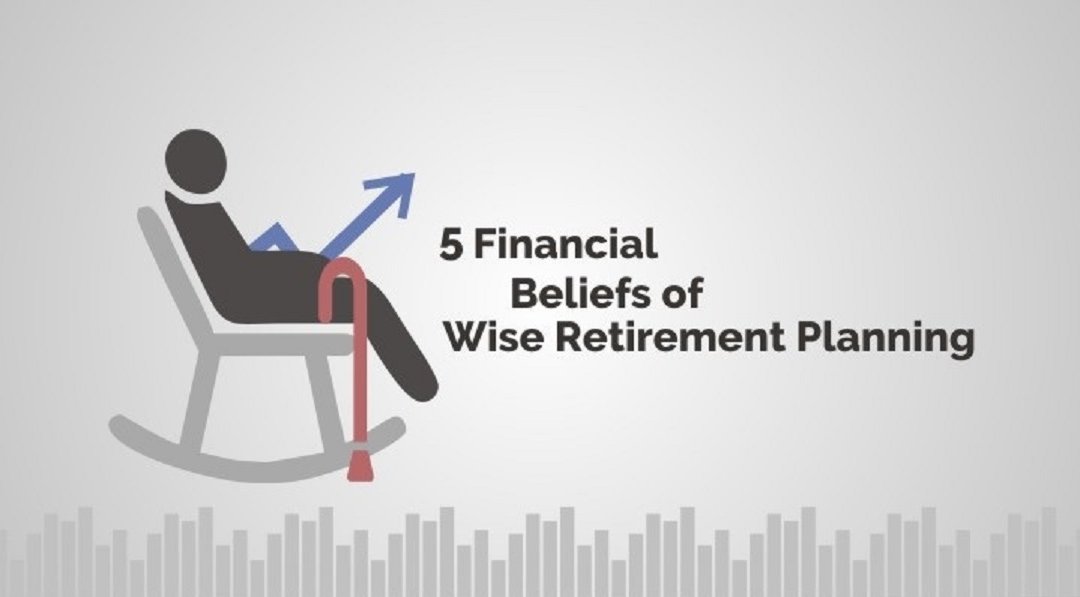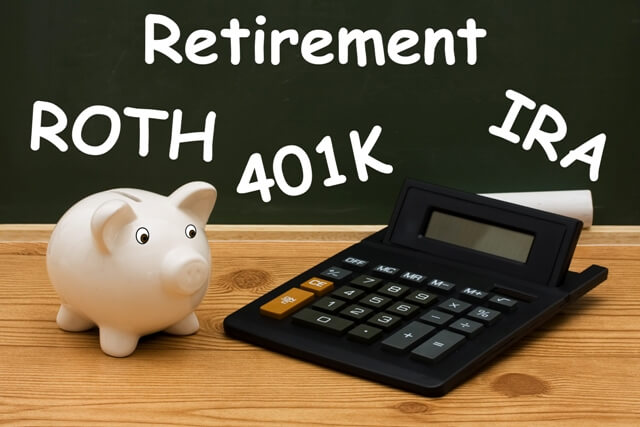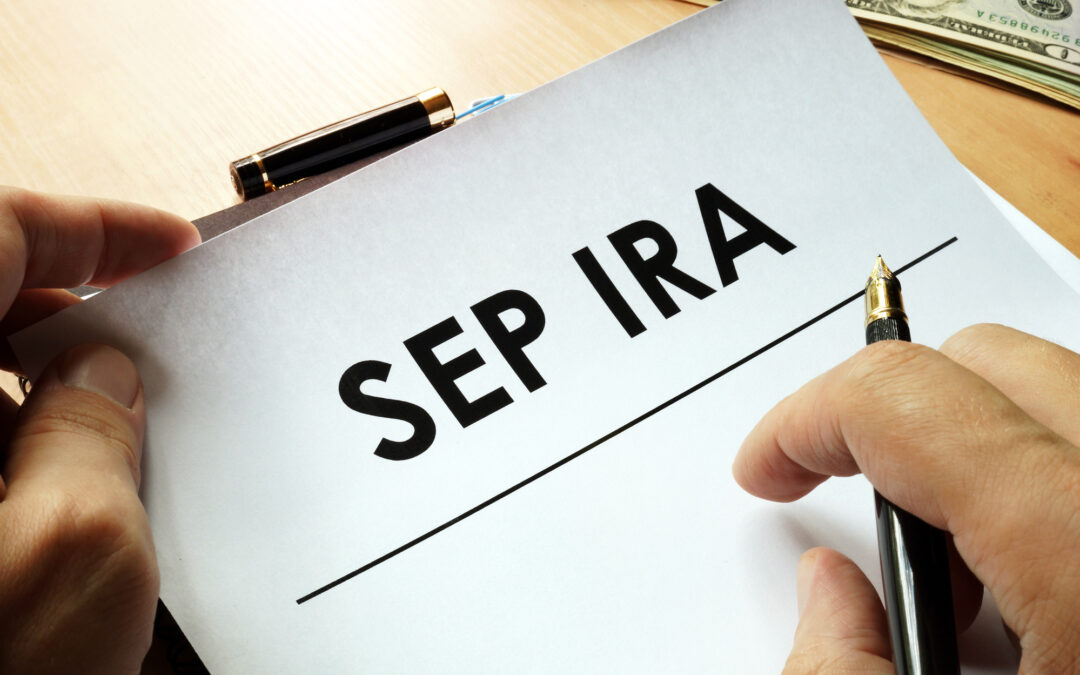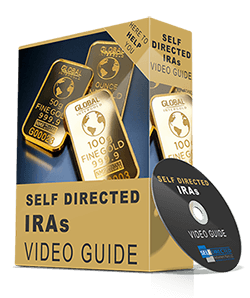
by Rick Pendykoski | Oct 26, 2018 | Uncategorized
Who doesn’t want to retire with Ease and Comfort after the hardships of 1st Innings!!!
Retirement is one of the most important phases in a person’s life. It marks a tectonic shift from active income to passive income. The amount of savings and investments done during the youth and the middle age will determine the quality of a good 2nd innings. Many people think that whatever they have saved will be enough for their sunset years without accounting for the monster called inflation.
Unfortunately retirement planning generally comes last in all the financial goals of most Indians. Most of the people generally save for a dream house or a dream car they want to purchase or for exotic vacations. If a person were to start investing at the age of 30, with a sum of Rs 10000 per month and if it were to grow at 12% per annum, he would have an accumulated corpus of Rs 6.5 crores at the age of 65. However if the same person were to start at the age of 35, then he would accumulate just 3.5 crores. Thus it’s a whopping difference of Rs 3 crores. Hence the earlier one starts, the more he can accumulate.
The 5 financial beliefs of wise retirement planning are as follows:-
- Your expenses will not halve when you retire– A lot of people forget to factor in the healthcare expenses that balloon during old age. Life expectancy of an individual has gone up from 70 Years to 80 years. Moreover inflation points out that the cost of goods and price will keep moving up.
- You could live much longer than you think– Living too long is another problem that happens if one is not financially secure. Many people face the problem of depleting resources when it comes to old age since they did not accumulate enough. With the improvement in healthcare, the life expectancy of an individual has gone up. One could easily ensure at least 20 years post retirement.
- Buying a pension plan is not enough, your retirement plan needs to be your own plan– A lot of advertisements talk about retirement with pension income. One needs to factor in inflation when assessing the expenses which would start arbitrarily without any income in the old age. A corpus needs to be accumulated from which atleast 8% to 10% can be withdrawn per year equated on a monthly basis. This accumulated amount should be invested in a product which gives more than double digit returns per year so that it does not get depleted due to systematic withdrawals. A periodic Systematic Investment Plan would help in achieving the goal of meeting monthly expenditure during old age. Mostly the pension plans that are available in the market offer very low returns and moreover the capital amount is either blocked or is only released during death of the holder to the nominee. Commutation is restricted to only a part of the pension corpus.
- Get expert advice– One should take the help of financial planners while planning their retirement. Doing everything by yourself could lead to biased decisions and wrong investments and also investors might tend to squander their money over something which is for temporary gratification and the one which will not be useful for their planned long term goal. One could also study online about wealth management if one has difficulty finding the right financial advisor. One needs to follow the right asset allocation in order to achieve actual financial freedom. This only an expert would be able to guide to.
- Invest and shop smartly– It is extremely easy to spend frivolously as soon as one gets his salary paycheck on the latest gadgets and the fancy stuff. Any person who has acquired great wealth has done so by investing 1st and then spending whatever is left after savings. Investing leftover after spending is an incorrect method of financial planning. As soon as one gets his pay, it is prudent to allocate a percentage towards investment. Compounding plays a major role in wealth creation and it all depends on how much one invests and not splurge unnecessarily on the latest fads available in the market. This would ensure financial peace.
Why do we need to plan Retirement Early?
77% Indians do not save for retirement, most of the people depend on their children for support. The youth of the country does not save much; they tend to be spendthrift with their credit cards and hence are not focussed on retirement kitty. Considering that the Government in India does not provide retirement benefits like some of the countries in the Western world do, it is imperative to take financial planning seriously. With so much of information available online, one needs to start saving smartly. The investments should be in an asset class which beats inflation handsomely and thus equities and mutual funds happen to be the best avenues.
For people who are slightly risk averse, mutual funds are a better bet compared to direct equity. A decent life cover needs to be taken (atleast 10 times of annual income) and a comprehensive health cover also needs to be taken. These will be like a financial umbrella for one’s retirement corpus. A lot of times people do not take adequate health insurance and life insurance and in case of any unforeseen circumstance stand to lose out big on their investments. Thus rightly said —
“Retirement is supposed to be the great escape from the stresses inherent in most jobs, a time to experience a fulfilling life derived from many enjoyable and rewarding activities.”Ernie J. Zelinski, The Joy of Not Working.
Also Read: What Is The Best Age To Retire?
Rick Pendykoski is the owner of Self Directed Retirement Plans LLC, a retirement planning company based in Goodyear, AZ. He has over three decades of experience working with investments and retirement planning, and over the last ten years has turned his focus to self-directed ira accounts and alternative investments. If you need help and guidance with traditional or alternative investments, call him today (866) 639-0066.

by Rick Pendykoski | May 2, 2018 | Uncategorized
Are you tempted to invest your retirement savings in digital currency? Do you think Bitcoin could be your primary source of retirement income?
Bitcoin and other digital currencies seem to have become all the rage as an investment option these days. In addition to growing at an incredible rate over the last few years, the cryptocurrency has also become widely accepted in many areas, which only helps to make it more popular.
However, there are a few reasons why Bitcoin shouldn’t play a significant role in your retirement planning:
- Potential Growth Isn’t Actual Growth – Many financial experts believe that the past and current growth of cryptocurrency is not sustainable over the long term. Treat these as you would any speculative investment, instead of looking at potential value alone. Like other speculative investments, it’s equally possible for the value to rise tremendously or drop to a fraction of the price at which you bought it.
- High Volatility Makes for High Risk – Bitcoin did extremely well in 2016 and 2017, but the sudden drop in prices at the end of 2017 left many regretting their decision to invest in it. At a time when the digital currency would double in value within a week, a number of small investors decided to jump on the bandwagon and put their savings at risk. Buying Bitcoin at a high price meant heavy losses when prices fell.
- Constant Fluctuations Are a Gamble – Most Bitcoin success stories came from investors who bought the cryptocurrency when it cost a few hundred dollars, or sold it when the process was its peak. There’s no way to predict when prices will rise or fall, so investing in digital currency is a lot like buying a lottery ticket. There’s little harm in spending ‘spare change’ on it, but avoid putting large sums at risk.
- You Need Steady Gains for Retirement – Cryptocurrency has no guaranteed rate of return. Yes, it might make you a millionaire, but it might also leave you broke, especially if you put all your money in it. It’s a good option for short-term speculation, but only as a small percentage of a diversified portfolio. For retirement income, you need smart long-term investments that offer steady, if slow, growth.
- Buy When You’re Financially Ready – If you’re considering Bitcoin or other speculative investments, you need to offset the risk by making sure your finances are in control. Ideally, you should invest in cryptocurrency when you’re free of debt, have good cash flow and a decent emergency fund, and have already set up a source of income for college, retirement and other financial goals.
Investing in Bitcoin works best if you already have a healthy mix of short-term and long-term assets in your portfolio, and are investing for retirement in an IRA or other tax-advantaged plan. If you need help with making the most of your investments for the future, get in touch with our retirement planning experts now!
Rick Pendykoski is the owner of Self Directed Retirement Plans LLC, a retirement planning company based in Goodyear, AZ. He has over three decades of experience working with investments and retirement planning, and over the last ten years has turned his focus to self-directed ira accounts and alternative investments. If you need help and guidance with traditional or alternative investments, call him today (866) 639-0066.

by Rick Pendykoski | Apr 19, 2018 | Uncategorized
Self directed IRAs offer many benefits, such as access to a wider range of investing options and greater control over asset allocation. By moving your existing account to one of these plans, you can maximize the growth of your retirement funds by selecting investments that offer the highest tax efficiency and returns.
You can transfer or rollover funds to a self directed IRA from another retirement account in specific situations:
- 401k or 403b Account with a Former Employer
Employer-sponsored 401k or 403b plans offer significant tax benefits, and have higher contribution limits than IRAs. Max out these plans to take advantage of matching contributions while working, and rollover to a self directed IRA with checkbook control after you leave the job.To avoid taxes and early withdrawal penalties, make sure the withdrawal is designated as a rollover and choose the right IRA type. Rollover your 403b or traditional 401k plan to a self-directed traditional IRA, and pick a self directed Roth IRA for an existing Roth 401k plan.
- Traditional IRA with a Brokerage Firm/Bank
If you are interested in using self directed IRA accounts, you can perform a direct or indirect rollover with a traditional IRA. For a direct rollover, funds are directly transferred or a check is made out from your existing plan to the new IRA.In case of an indirect or 60-day rollover, funds from your existing plan are distributed to you, and you need to deposit them into your self directed IRA within 60 days. A percentage of the amount may be withheld as tax, which you can recover while filing tax returns. However, you need to add this amount while making the deposit.
- Roth IRA with a Brokerage Firm/Bank
Existing Roth IRA plans can be moved to self directed Roth IRAs the same way as a traditional IRA, and will not incur taxes and penalties if they’re handled correctly.To ensure that these transactions remain tax-free and penalty-free, opt for a direct rollover or transfer from one account to the other. This way, you are not directly receiving the assets from your existing retirement account, so it will not count as an early withdrawal.
- Inherited IRAs
If you have an inherited an IRA from a spouse, you can treat the account as your own or roll funds over to your self directed retirement account.With non-spouse IRAs, you have two options. You could take full distribution of the account, paying income tax on the funds, or have the plan retitled as an ‘inherited IRA’. For retirement accounts inherited from anyone other than a spouse, you can rollover to a self directed IRA only if the inherited IRA has been characterized correctly.
There’s no restriction to how many times you perform a direct transfer, but an IRA rollover can only be performed once in 12 months. To learn more about maximizing your retirement savings with self directed IRAs, call (866) 639-0066 today!
Rick Pendykoski is the owner of Self Directed Retirement Plans LLC, a retirement planning firm based in Goodyear, AZ. He brings over 30 years of diverse experience as a financial advisor. Rick takes great pride in giving honest and very experienced advice. Rick can readily converse with business owners and people looking to take control of their retirement accounts.
by Rick Pendykoski | Jan 22, 2018 | Uncategorized
Your retirement account can be a small lending institution. Private lending through your IRA or any other qualified retirement plan typically involves creation of a new promissory note, the purchase of an existing promissory note, either performing or non-performing, secured or unsecured.
A secured note adds a layer of security as it is backed by collateral. It guarantees the lender some type of property in case a default happens. On the other hand, an unsecured note typically carries a higher rate of interest as it is not backed by collateral.
Investing in private lending can also involve debt secured by mortgages or deeds of trusts. Let’s say a small lender or an individual invests in a note. The lender can then sell the note at a discount. This means that the IRA will be repaid with both interest and some of the principal.
Another option is to loan money from your retirement fund to a company via a promissory note, backed with corporate stock as the collateral. In this case, the level of risk the secured note carries is different. This is because the value of the collateral can increase or decrease depending on the success of the issuing company. In this category, there is an unsecured note too. An example is a bridge loan given to a company looking for debt financing.
Your options for private lending investments are:
- Secured or unsecured notes
- Performing and non-performing (or discounted) notes
- Residential and commercial mortgages and deeds of trusts
- Business loans (including microloans) and personal loans
- Automobile and equipment financing
- Equity participation loans
- Debt-financed notes
By investing your retirement fund into private lending, you are essentially turning your retirement account into a bank. You can make hard money loans, which are secured by real estate and also loans to purchase business equipment, automobiles, and anything else the borrower wants to purchase with the loan. The best part of loaning money from your retirement account is that you can set your own interest rate and origination fees.
Marketplace lending is another popular way of private lending. In this type of lending, the investments are often made indirectly in a pooled investment vehicle (PIV) or fund. This vehicle, then either invests in debt instruments or loans.
A quick rundown on private lending (secured and unsecured) through self-direction
Can you loan money to your children with your retirement account funds? Absolutely, not! The IRS defines this transaction as a prohibited transaction. Whether in private lending or any other investment with your retirement funds, you need to ensure that you are not transacting with a disqualified person.
Disqualified persons include the following:
- Your fiduciaries
- Your family members such as your spouse, lineal descendant, ancestor, any spouse of a lineal descendant
For more information, read this page on prohibited transactions.
In private lending through a self-directed retirement account, the investor chooses the borrower and is responsible for working out the loan terms with the borrower. In the case of a self directed IRA – once the details of the loan are documented and handed over to the custodian, the custodian executes the loan instructions on behalf of the IRA, and hold the assets. In the case of a self directed 401 k there isn’t a custodian, the investor is the trustee of their plan and executes the documents.
It is important to understand your state’s lending laws—conduct due diligence on market interest rates, reasonable loan terms, and maturity date. Most lenders include an amortization schedule in their notes.
Summary
A self-directed IRA or self-directed 401(k) can fund either secured (low risk) or unsecured loans (high risk). These decisions are taken by the investor whose retirement plan will lend the funds. While carrying out these transactions, you need to ensure that you are not transacting with a disqualified person. According to the IRS, this will be termed as a prohibited transaction, which can be penalized. An example of a prohibited transaction will be loaning money to yourself personally or your family members from your IRA.
A self-directed retirement plan allows you to invest in a wide array of alternative assets beyond mortgages and loans. Some of the non-traditional investment options, including private placements, real estate, and precious metals. All earnings and profits that your investment generates flow back into the retirement plan and grow tax-deferred until distribution or tax-free (if held in a Roth IRA). All expenses associated with the asset are paid by the plan.
The type of paperwork differs depending on the exact nature of your private lending investment.
Rick Pendykoski is the owner of Self Directed Retirement Plans LLC, a retirement planning company based in Goodyear, AZ. He has over three decades of experience working with investments and retirement planning, and over the last ten years has turned his focus to self-directed ira accounts and alternative investments. If you need help and guidance with traditional or alternative investments, call him today (866) 639-0066.
by Rick Pendykoski | Dec 22, 2017 | Uncategorized

As a couple, a smart retirement planning strategy can help you enjoy a comfortable and happy life when you’re older. However, you need to sit down and figure out the basics about each other’s financial or retirement goals, annual income and savings. Knowing where you stand financially can help you decide if or when you can afford to retire.
If you’re both working, the first step is to get the full employers match on a 401k. Based on your income and how much you can afford to max out your retirement accounts, the income tax deductions and matching employer contributions can help you boost your retirement savings tremendously.
If one spouse does not work, a spousal IRA can help the working spouse make contributions in the name of the non-working one. Remember, the ability to claim tax deductions is limited if you have a 401k as well as an IRA. If you both have IRAs, you can name each other as a beneficiary of the account.
Diversify Investments
When it comes to personal finance and investments, spouses often disagree. Retirement planning can be challenging in this case, but keep in view the family as a whole. Look for IRA investments that are low-risk and offer long-term gains, but diversify your portfolio to help you meet short-term goals as well.
Make Collective Savings
Both of you are individually accountable for your own retirement, but just as you decide on the financial aspects of your lives together right now, you should also save for retirement together. If your partner is not enrolled in a 401K, save more in your own plan to help you meet mutual retirement goals.
Avoid Retiring Together
Retiring together isn’t wise, since you put double the burden on your lifestyle and the change becomes too extreme. Try on partial retirement by working fewer hours at first. While ironing out the kinks, you will better understand how to utilize your free time before taking on retirement!
Review Beneficiaries
Even after choosing a beneficiary while opening a 401k, you need to update it after major life changes like marriage, the birth of your children, divorce or death. Contact your financial planner, IRA custodian or HR representative handling your company’s 401k plan to modify beneficiaries as needed.
Discuss Retirement Goals
Spouses usually have different ideas about their lifestyle after retirement. It’s healthy to have varying interests and hobbies, but discuss these so retirement planning becomes hassle-free and you both get what want. In case either of you has a business plan or wants to travel after retirement, plan for it now.
Budget Expenses
If you plan on moving or modifying your home, how this would affect your retirement lifestyle and budget? Will it make your life better in old age? Figure out your living situation, how much time you expect to spend with children or grandchildren, funding college expenses when you near retirement, and other questions now.
Educate Yourself
Learn everything you can about retirement plans, to understand which kind will best suit your needs. Consult experienced financial advisors to explore asset allocation options tailored to your specifications. Retirement planning is one of the most important decisions of your life, so take your time to get it right.
At Self Directed Retirement Plans, our expert advisors will be glad to help you understand your retirement planning options and choose the right one. If you want to explore self directed IRAs or get the right investment advice for planning retirement savings as a couple, contact us today!
Rick Pendykoski is the owner of Self Directed Retirement Plans LLC, a retirement planning company based in Goodyear, AZ. He has over three decades of experience working with investments and retirement planning, and over the last ten years has turned his focus to self-directed ira accounts and alternative investments. If you need help and guidance with traditional or alternative investments, call him today (866) 639-0066.

by Rick Pendykoski | Nov 6, 2017 | Uncategorized
Do you as a small business owner find the process of choosing a retirement plan expensive and confusing? A Simplified Employee Pension IRA or SEP IRA might be the perfect option for you.
A wide-array of small businesses, ranging from partnerships, LLCs, S-Corporations, C-Corporations to sole proprietorships can benefit from the powerful features of SEP IRA accounts. These accounts were created so as to provide a tax-advantaged retirement plan for small businesses.
A SEP IRA can simply be set up by executing a written agreement, or setting up the SEP plan with a qualified financial institution (such as a mutual fund company, a bank, a brokerage firm or through a financial advisor), or by opening a SEP IRA for each eligible employee.
Let’s take a look at 7 ways in which small businesses can benefit by choosing a SEP IRA:
- A major advantage of an SEP IRA account is its high yearly maximum contribution limit. Hence, you may contribute more to a SEP IRA as compared to traditional IRA or Roth IRAs as long as you make more than $22,000 approximately.
- As with a traditional IRA or 401(k), contributions to a SEP IRA account are not taxed in the year they are made. Instead, until the withdrawals are made, the taxes are deferred. This allows the money to compound tax-deferred for long periods of time.
- Employers can reduce the tax bite on the contributions they make to the SEP IRA account of their employees as these contributions are tax-deductible for the employer.
- With an SEP IRA, an employer is not required to make contributions each year. Also, the amount of contribution that you can make as a percentage of an income can vary from year to year.
- In case of a 401(k) plan, it is mandatory to fill out an annual form 5500. But this is not the case with an SEP IRA. There is no requirement to fill out excess tax forms.
- Every participant has immediate and complete ownership of the money contributed by you to his or her SEP IRA accounts. This means the employer is not responsible for the investments within the employees’ accounts. Also, the employer does not have to set up a schedule for vesting or to track service requirements. Each employee is responsible for choosing his or her investments inside this account.
- With SEP IRA, employers can take advantage of the flexible funding feature. This means the employers can take the decision every year regarding the amount to be contributed to this account. The amount can vary and the employers can even skip contributing any amount altogether.
Apart from all the features listed above, small business owners can also benefit from the fact that along with contributing for an SEP IRA, they can also contribute to a Roth or a traditional IRA. Also, SEP IRAs are easy to set up, have no initial setup or annual maintenance fees, come with low administrative costs and are easily available through most online investment firms.
If you too are interested in learning more about how an SEP IRA can be beneficial for your business, get in touch with our expert IRA advisors at SD Retirement Plans LLC today.
FAQs
Can I Contribute to a SEP Account?
It is not possible for you to contribute to a SEP account if you are an employee. Only employers have the authority to make contributions to a SEP account, and they are free to choose the amount they want to put in. Additionally, employers have the option to opt out of making any SEP account contributions at all.
What Are the Contribution Limits for a SEP Account?
The SEP contribution limit is $61,000 in 2022, rising to $66,000 in 2023, or the lesser of 25% of an employee’s income.
Rick Pendykoski is the owner of Self Directed Retirement Plans LLC, a retirement planning firm based in Goodyear, AZ. He brings over 30 years of diverse experience as a financial advisor. Rick takes great pride in giving honest and very experienced advice. Rick can readily converse with business owners and people looking to take control of their retirement accounts.










